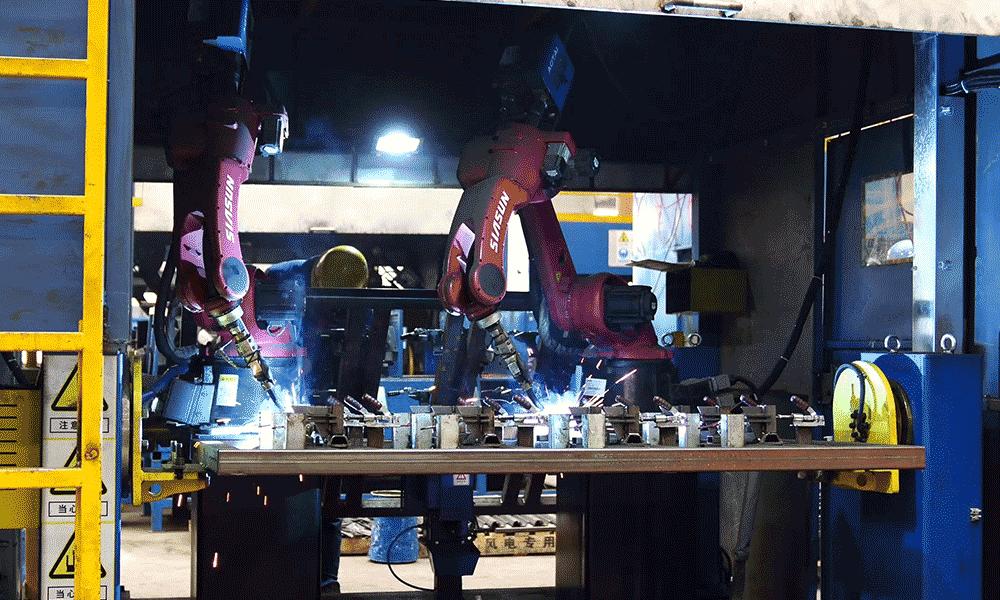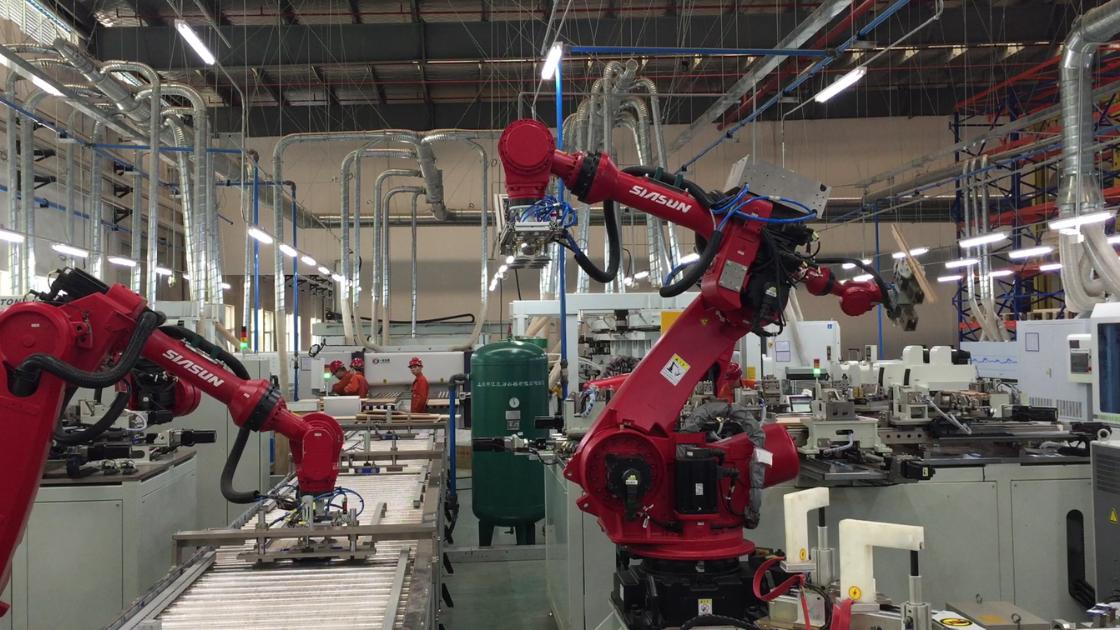TL;DR:
- Automation increases the productivity and quality of welding processes.
- Benefits: less need for manual supervision, reduced errors and loss of material.
- Higher precision and quality with robots and robotic systems.
- Energy savings through optimised processes.
- State-of-the-art technology: laser welding and machine vision systems.
- Laser welding: precise, fast, corrosion-resistant.
- Challenges: production adaptation, programming, staff training.
- Robots improve workplace safety.
- The need for new competences in operating robotic systems.
- Investment in education and training is key to employee adaptation.
Automation of welding processes is the key to modern production. As a specialist, I know how important new technologies are in this field. Automation increases productivity, precision and saves costs. Thanks to robotics, welding becomes more reliable. Do you want to know what the biggest trends in the industry are? Find out how technology is changing the world of industry! Read on and discover the future of welding.
How does automation affect the efficiency of the welding process?
The importance of automation in welding is growing, with gains in productivity and quality. In automated assembly lines, historical data shows a significant acceleration of the production process, leading to increased production efficiency. With welding robots, our products are more precise and consistent.
Benefits of automation
Automated welding processes offer many benefits. First is the reduction in production costs by reducing the need for manual supervision and intervention. This has an impact on the efficiency of the welding process, as robots can work continuously, regardless of changing working conditions. In practice, this means fewer errors and material losses.
Precision and quality
Automation brings a whole new level of precision to the welding process. Robotic systems for welding perform repetitive operations with a precision that is difficult to achieve manually. When comparing traditional methods with robotic ones, we can see that technology influences the quality of welds, which ultimately affects the durability and reliability of finished products.
Energy saving
By opting for automation, energy savings are also gained. Optimised welding processes reduce energy consumption through precise time and capacity management. Efficient use of energy leads to lower operating costs, which is important for making our products more competitive in the market.

What are the modern technologies in welding automation?
Welding automation issues are key to increasing productivity and quality in the metal industry. At the same time, it is also a challenge for companies wishing to remain competitive in the market. In recent years, there has been a tremendous development of advanced welding technologies that contribute to increasing the efficiency and precision of the welding process.
What technologies are currently used in robotic welding?
Technologies used in robotic welding primarily include laser welding systems and advanced machine vision systems. Laser welding makes it possible to achieve high-quality joints with minimal time and material input. In the context of robotic welding stations, such as those offered by the Automation Michale, it is crucial to develop control and analysis systems that monitor the entire process, thereby improving the quality of the final product.
What are the advantages of laser welding technology?
Laser welding is one of the most advanced technologies used in the automation of welding processes. The main advantages of this method are precision, speed and the ability to join different materials without the need for additional welding elements. This technology allows the creation of durable joints that are resistant to material fatigue and corrosion. In the metal industry, laser welding is particularly suited to the production of components requiring high dimensional and aesthetic accuracy. This enables companies not only to increase production efficiency, but also to adapt to increasingly complex market requirements. Ideal for this purpose are workstations equipped with Siasun works.
How does robot integration affect the welding industry?
The integration of robots in welding brings revolutionary changes that are transforming this traditional industrial sector. However, it is worth remembering that the process of implementing robots into welding shops brings with it some challenges. The first and most important is the adaptation of existing production lines to the new technology. The introduction of robots requires the modification of systems, which can involve costly upgrades and the need to reprogram machines, causing many companies to avoid such investments.
However, there is another side to this coin. The investment in a welding robot can pay for itself in about 2 years given the high labour costs of skilled workers, and only such workers can be replaced effectively by a welding robot. Wondering who will operate this robot? I already answer. Our robots can be operated even by unskilled workers after a short training, which significantly reduces the cost of production and allows for a quick return on investment.
Challenges in implementing robots
What are the challenges in implementing robots in welding processes? Precision: robots need to be accurately programmed to avoid production errors. Another challenge is staff training. Operators need to acquire new skills in order to effectively manage advanced robotic systems. Staff training is provided by us.
Robotics and safety
How does robotics improve safety in welding? Automation addresses this problem by minimising direct contact between workers and unsafe processes. By using remote control and monitoring systems, robots provide a higher level of safety. Companies such as Michale, provide modern solutions in this area, allowing for increased productivity and safety in workplaces.
The use of robots in welding is not just a trend, but a necessity in the drive to improve the quality and efficiency of production processes. With the right approach and integration, robotisation brings benefits that translate into long-term industry growth.
How has automation affected employment and competence in welding?
In an era of rapid advances in technology, the automation of welding processes is changing the landscape of the labour market. One of the key questions is: What new competencies are required in welding in the age of automation? The answer is clear: today, in addition to traditional technical skills, welders need to know how to operate robotic welding systems. Competence in robot programming and maintenance is now at a premium.
Automated welding stations introduce the need for new knowledge and skills, which affects the labour market. While automation is eliminating some jobs, it is simultaneously creating others - requiring more technical knowledge and familiarity with modern technology. This means that it is necessary to invest in education and training to adapt employees to changing requirements.
This makes employees more versatile and ready for the challenges of the modern labour market. It is also worth noting robotised welding station offered by Michale, which is an excellent example of the use of modern technology in welding.
Summary
Automation is revolutionising welding, increasing the efficiency and precision of operations. Newer technologies, such as laser welding, provide better results and reduce energy costs. The integration of robots increases worker safety and production efficiency. It also strengthens the labour market, betting on the development of new skills. By investing in these technologies, you are betting on the future of your business, where productivity and innovation drive success. Automation brings tangible benefits that outweigh the initial outlay, creating a modern, competitive industry.

